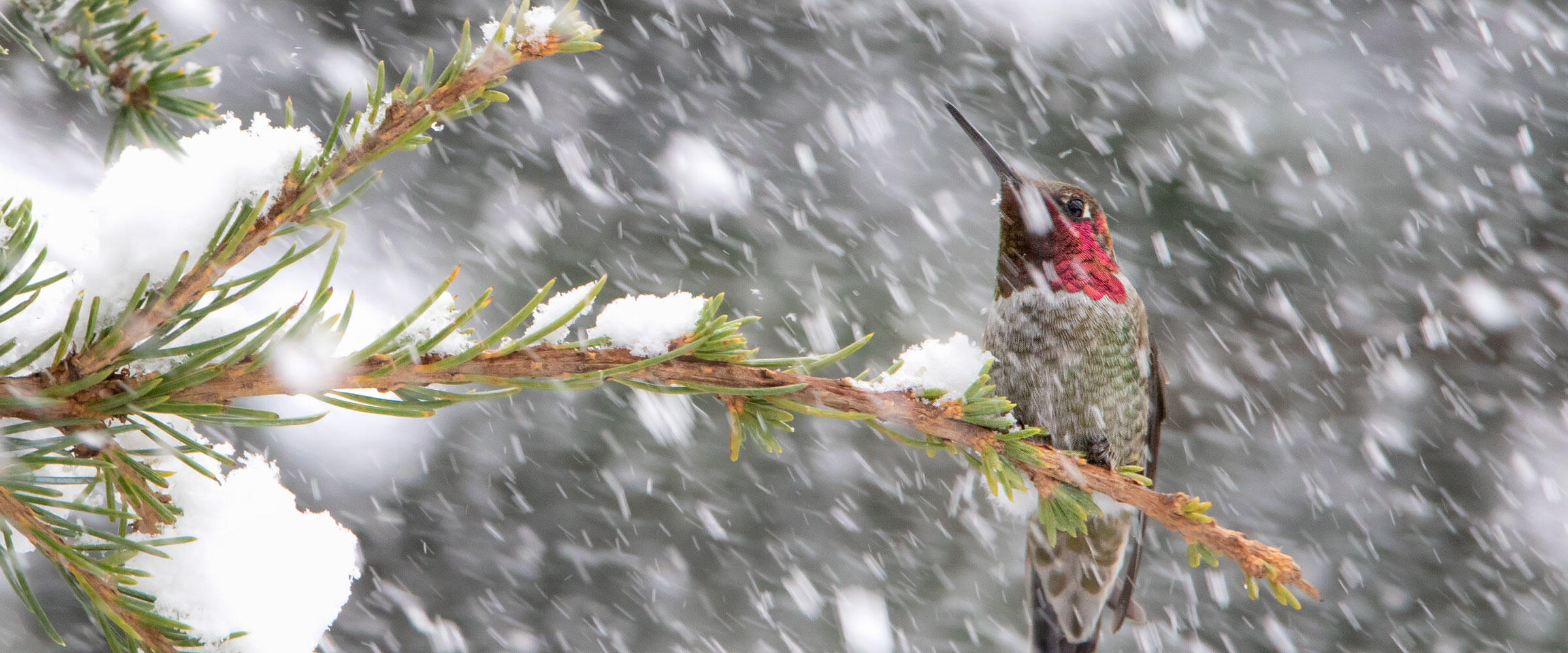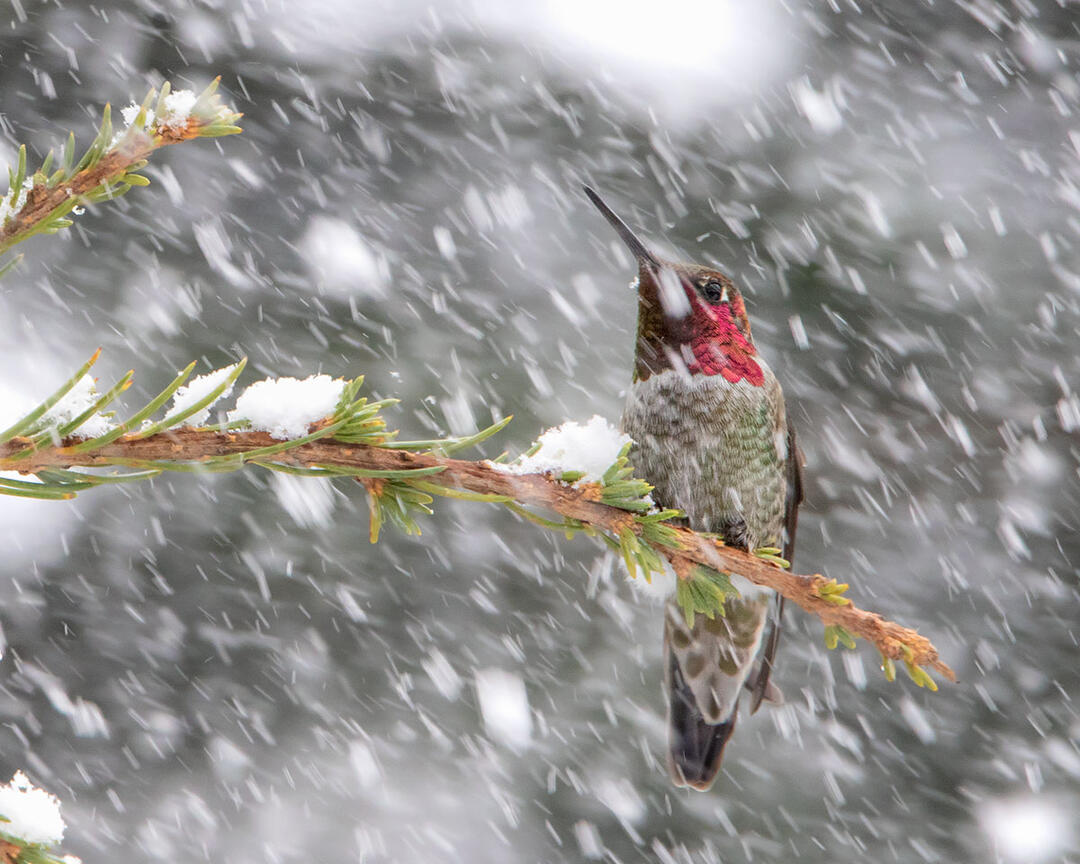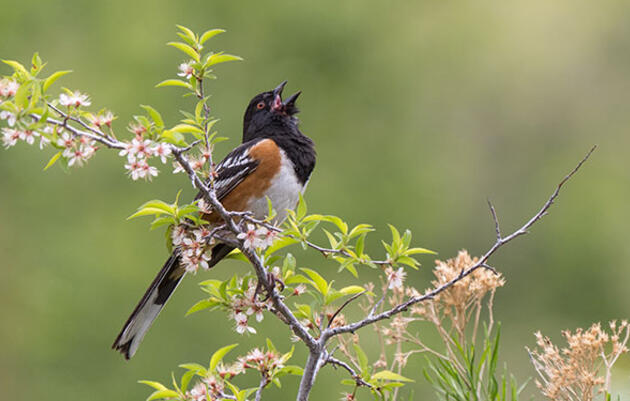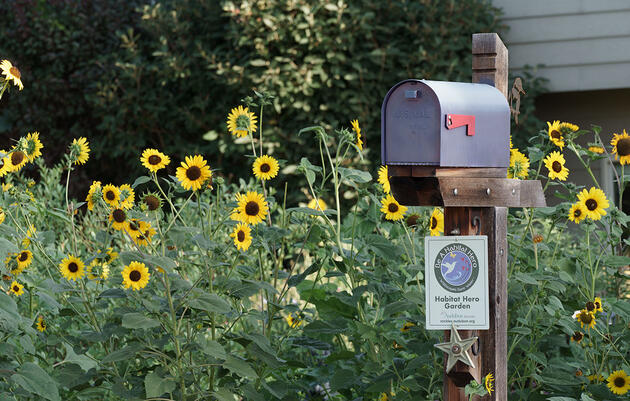During spring and early summer, Broad-tailed Hummingbirds arrive in the Rocky Mountain region. These arrivals bring much joy to birders, gardeners, and the residents who appreciate these little flying gems. However, every year we receive the same question: What do hummingbirds do during a blizzard?
Any person who has lived in the Rockies knows the script of these spring storms. It's three days before Memorial Day, shorts have been worn, flowers have bloomed, and insects are buzzing about. Male Broad-tailed Hummingbirds have been performing their trill-filled displays for more than a week, establishing territories and attracting females. Then, overnight, a storm drops eight inches of snow at lower elevations, and two feet of snow in the mountains.
So, how do hummingbirds respond to food deficiency and cold temperatures?
Hummingbirds are often thought of as strictly nectar feeders. While nectar is a crucial part of their diet, hummingbirds also will feed on gnats, aphids, other small insects, and small spiders. Additionally, hummingbirds will use sap as a nectar substitute if nectar is inaccessible or scarce. They utilize the sap wells excavated by Red-naped Sapsuckers, an adaptation found in many species of these buzzing birds. Additionally, when daytime temperatures drop below 50 degrees Fahrenheit, Broad-tailed Hummingbirds will increase their feeding activity by about 20 percent! So, to answer the first part of our question, hummingbirds diversify and increase their food intake during spring storms.

The diversity of bird adaptations to combat the cold is as extensive as the diversity of bird species in the Rockies. However, hummingbirds have a tool that few other species can boast: torpor. Torpor is a state of lowered physiological activity, with most examples being characterized by lowered body temperature and metabolic activity. Simply put, it is highly specialized sleep. Torpor, for hummingbirds, is a response to inadequate energy intake and/or low external temperatures.
In torpor, Broad-tailed Hummingbirds will maintain a minimum body temperature of about 54 degrees Fahrenheit when surrounding temps fall below 50 degrees Fahrenheit. Male hummingbirds can also leave an area that is experiencing detrimental weather, but a female with a clutch of eggs is not so lucky. Females, however, are able to counter the harsh climate effects by utilizing a well-insulated nest.
How can you help the hummers afflicted with spring snowstorms? There are two easy steps you can do at home! First, providing a clean, filled hummingbird feeder is essential. Make sure to change the “nectar” frequently, avoid using store-bought “nectar,” and do not let the liquid freeze!
Second, become a Habitat Hero. One of the biggest threats birds face is habitat loss. Providing hummingbirds with shelter and native food sources is a great way to help, while also enjoying the benefits of a native garden! Check out more about our Habitat Hero program here.










